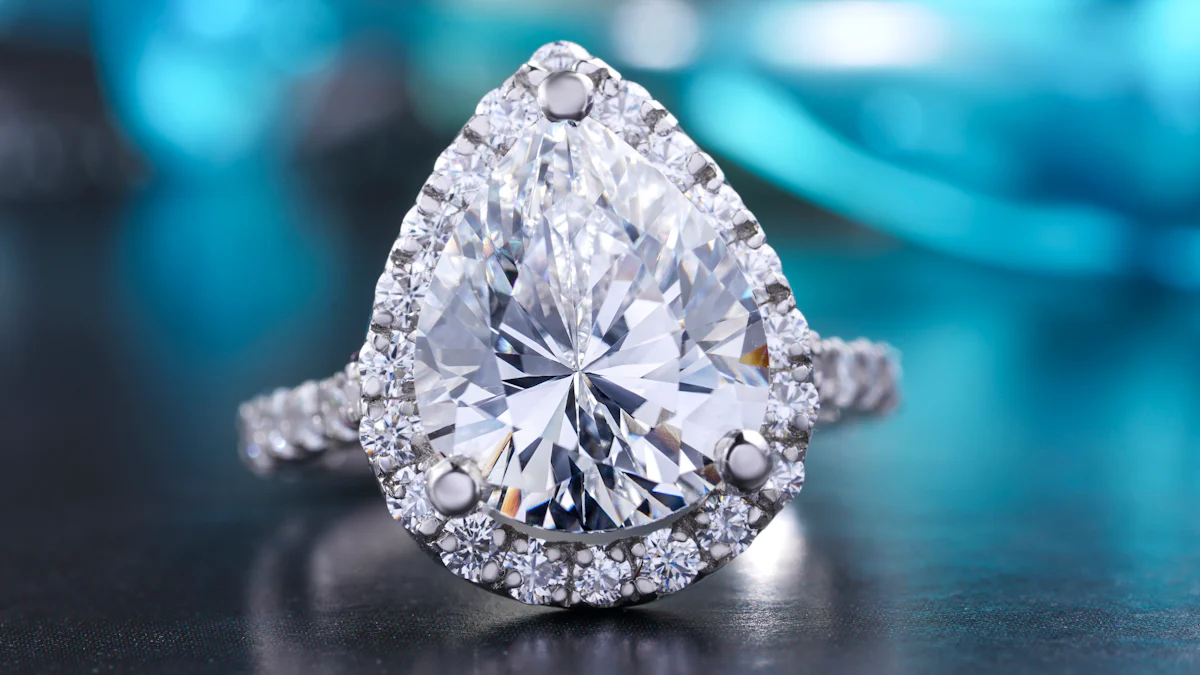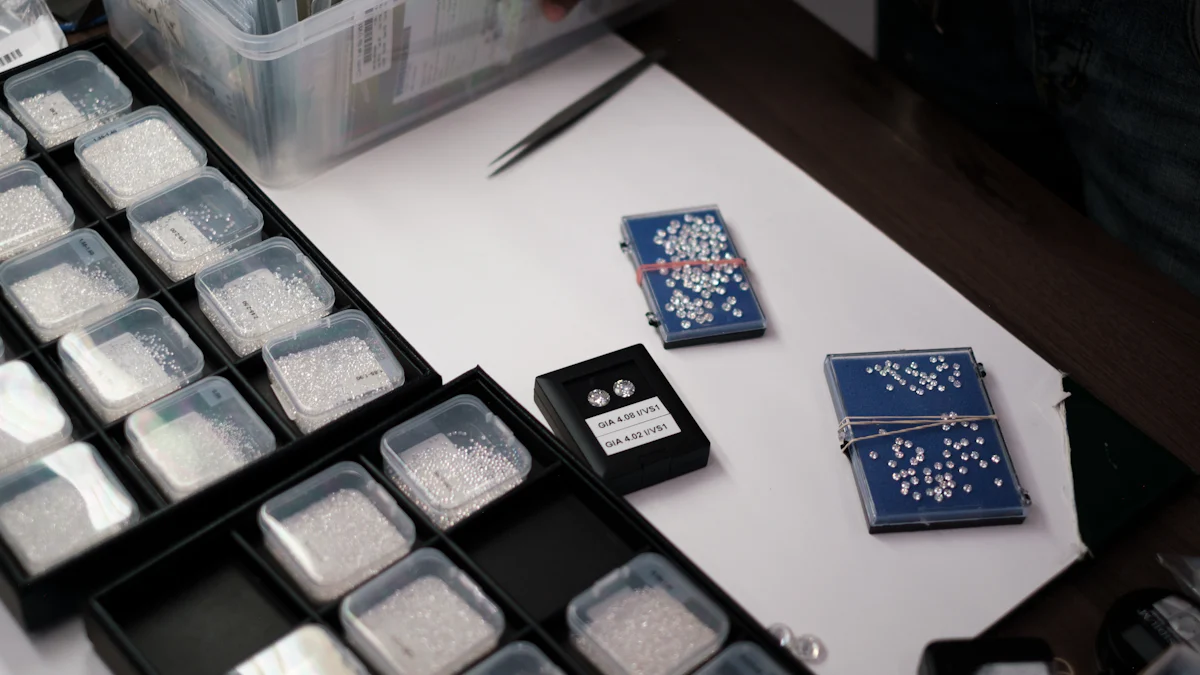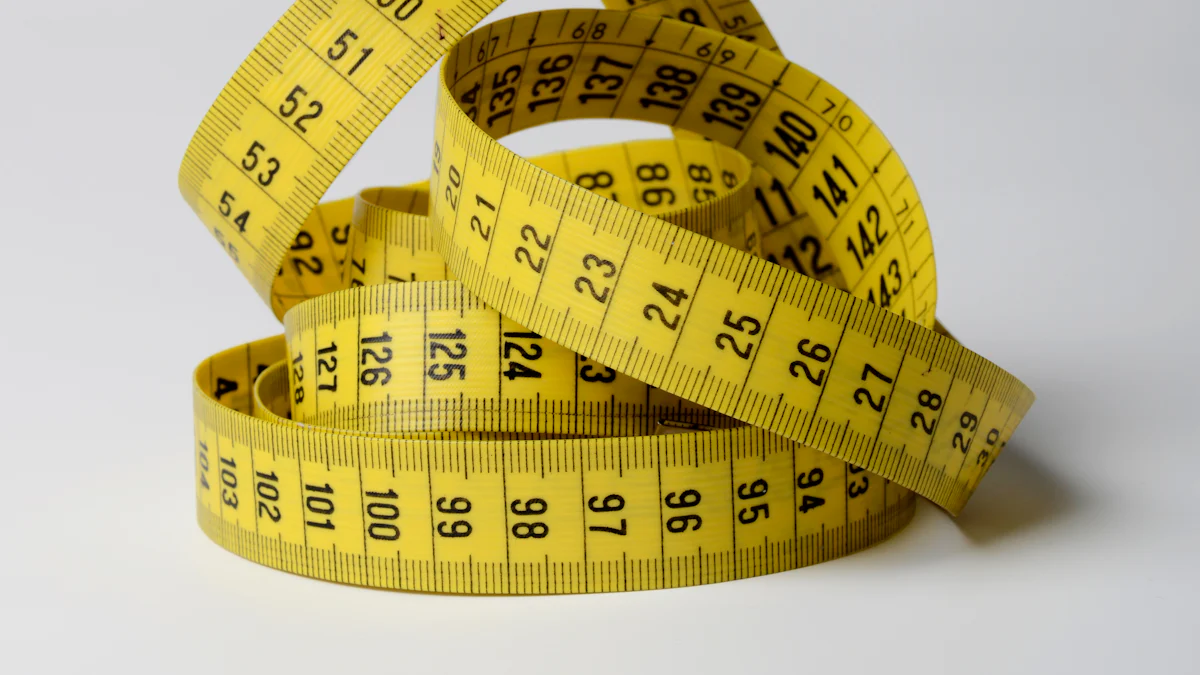Guide to Diamond Carat Value Calculators

Understanding the value of a diamond can be complex, but using a diamond carat value calculator simplifies this process. These calculators help you make informed purchasing decisions by providing a clear picture of how carat weight influences price. Diamonds are priced per carat, and as the carat weight increases, the price per carat also rises exponentially. This non-linear relationship means that even a small increase in carat weight can significantly impact the total cost. By using a calculator, you can better grasp these pricing dynamics and ensure you get the best value for your investment.
Understanding Diamond Carat Value Calculators

What is a Diamond Carat Value Calculator?
A diamond carat value calculator is a specialized tool designed to help you determine the worth of a diamond based on its carat weight. Carat weight plays a crucial role in assessing a diamond's value. This calculator simplifies the process by allowing you to input the diamond's dimensions, such as width and height, to quickly calculate its total carat weight. By using this tool, you can gain a clearer understanding of how carat weight impacts the overall price of a diamond.
Purpose and Benefits of Using a Calculator
Using a diamond carat value calculator offers several advantages:
-
Accuracy: These calculators provide precise calculations by considering key attributes like carat weight, cut, color, and clarity. This accuracy ensures you have a reliable estimate of the diamond's value.
-
Convenience: Online calculators are easily accessible and user-friendly. You can quickly input the necessary details and receive an approximate price range for the diamond. This convenience saves you time and effort when evaluating multiple diamonds.
-
Informed Decisions: With a clear understanding of a diamond's value, you can make informed purchasing or selling decisions. The calculator serves as a useful benchmark, helping you compare different diamonds and choose the best option for your needs.
-
Market Insight: By using a calculator, you gain insight into current market prices. This knowledge empowers you to negotiate better deals and ensure you receive fair value for your investment.
Factors Affecting Diamond Prices

Understanding how diamond prices are determined involves examining several key factors. These factors collectively influence the rarity and beauty of a diamond, ultimately affecting its market value.
Carat
Definition and Importance
Carat refers to the weight of a diamond. It is one of the most significant factors in determining the price of diamonds. A single carat equals 200 milligrams. As the carat weight increases, the diamond becomes rarer and more valuable. This rarity significantly impacts the price per carat, making larger diamonds exponentially more expensive.
How Carat Weight Influences Price
The price per carat increases with the weight of the diamond. For example, a 2-carat diamond does not simply cost twice as much as a 1-carat diamond. Instead, the price per carat rises, leading to a much higher total cost. This exponential increase means that even a small difference in carat weight can lead to a substantial change in the diamond price per carat.
Cut
Explanation of Cut Quality
The cut of a diamond refers to how well it has been shaped and faceted. This quality affects the diamond's brilliance and sparkle. A well-cut diamond reflects light beautifully, enhancing its appearance and value. The cut quality is crucial because it can make a diamond appear larger and more vibrant than its actual carat weight suggests.
Impact on Diamond Value
A superior cut can significantly increase the price of diamonds. Diamonds with excellent cut grades often command higher prices because they maximize light reflection. Conversely, poorly cut diamonds may appear dull and less attractive, reducing their market value.
Color
Color Grading Scale
Diamonds are graded on a color scale ranging from D (colorless) to Z (light yellow or brown). Colorless diamonds are the most sought after and valuable. The less color a diamond has, the higher its price per carat. This grading scale helps buyers understand the subtle differences in diamond color.
Effect on Pricing
The prices of diamonds vary based on their color grade. Colorless diamonds, being rare, have a higher price per carat. As the color becomes more noticeable, the price decreases. Understanding the color grading scale helps you assess the diamond's value and make informed purchasing decisions.
Clarity
Clarity Grades
When you evaluate a diamond, clarity is a crucial factor to consider. Clarity refers to the presence of internal or external imperfections, known as inclusions and blemishes, respectively. The diamond grading system categorizes clarity into several grades, ranging from Flawless (FL) to Included (I). Flawless diamonds have no visible inclusions or blemishes under 10x magnification, making them extremely rare and valuable. As you move down the clarity scale, the number and visibility of imperfections increase, which can affect the diamond's appearance and value.
Influence on Cost
Clarity significantly impacts diamond prices. Diamonds with higher clarity grades, such as Flawless or Internally Flawless (IF), command premium prices due to their rarity and visual appeal. Conversely, diamonds with lower clarity grades, like Slightly Included (SI) or Included (I), are more affordable but may have visible imperfections that affect their brilliance. When considering a diamond purchase, you should balance clarity with other factors like carat weight and cut to find the best value for your budget.
Shape
Popular Diamond Shapes
Diamonds come in various shapes, each offering a unique aesthetic and appeal. Some of the most popular diamond shapes include Round, Princess, Emerald, and Oval. The Round shape is the most sought-after due to its classic appearance and excellent light performance. Princess cuts are known for their modern, angular look, while Emerald cuts offer a vintage charm with their step-cut facets. Oval diamonds provide an elongated silhouette, making them a popular choice for those seeking a distinctive style.
Shape's Role in Pricing
The shape of a diamond plays a significant role in determining its price. Round diamonds typically have higher diamond prices due to their popularity and the precision required in cutting. Other shapes, like Princess or Cushion, may offer a more cost-effective option while still providing excellent brilliance. When selecting a diamond, consider how the shape aligns with your personal style and budget. Understanding the influence of shape on diamond cost can help you make an informed decision and find a diamond that meets your preferences and financial considerations.
How to Use a Diamond Carat Value Calculator
Step-by-Step Instructions
Using a diamond carat value calculator can help you determine the worth of a diamond with ease. Follow these steps to get accurate results:
-
Select the Diamond Shape: Choose the shape of your diamond. Popular shapes include round, princess, and oval. Each shape can affect the price per carat differently.
-
Enter Carat Weight: Input the carat weight of the diamond. Remember, as the carat weight increases, the price per carat also rises exponentially.
-
Choose Color Grade: Select the color grade of the diamond. Diamonds range from colorless (D) to light yellow or brown (Z). The less color, the higher the price per carat.
-
Specify Clarity Grade: Enter the clarity grade. Clarity impacts the diamond's appearance and value. Flawless diamonds command higher prices due to their rarity.
-
Select Cut Quality: Choose the cut quality. A well-cut diamond reflects light beautifully, enhancing its value.
-
Click Calculate: After entering all the details, click the calculate button to get an estimate of the diamond's value.
Example Calculations
To illustrate how a diamond carat value calculator works, consider these examples:
-
Example 1: A 1-carat round diamond with a D color grade, VS2 clarity, and excellent cut quality might have a price per carat of $10,000. The total value would be approximately $10,000.
-
Example 2: A 2-carat princess diamond with an H color grade, SI1 clarity, and very good cut quality might have a price per carat of $6,000. The total value would be around $12,000.
These examples show how different factors influence the price per carat and the overall diamond value.
Tips for Accurate Results
To ensure you get the most accurate results from a diamond carat value calculator, consider these tips:
-
Double-Check Measurements: Ensure the carat weight and other measurements are accurate. Small errors can lead to significant differences in value.
-
Understand Market Trends: Keep an eye on market trends. Economic conditions and seasonal trends can affect diamond prices.
-
Compare Prices: Use the calculator for price comparisons. This helps you understand the market and make informed decisions.
-
Conduct Price Research: Research current diamond prices to verify the calculator's estimates. This ensures you receive fair value for your investment.
By following these steps and tips, you can effectively use a diamond carat value calculator to assess the worth of a diamond and make informed purchasing decisions.
Market Factors Influencing Diamond Prices
Understanding the market factors that influence diamond prices can help you make informed decisions when buying or selling diamonds. These factors include supply and demand dynamics, economic conditions, and seasonal trends. Each plays a crucial role in determining the value of diamonds in the market.
Supply and Demand Dynamics
Supply and demand dynamics significantly impact diamond prices. When the demand for diamonds increases, prices tend to rise. Conversely, if the supply of diamonds exceeds demand, prices may decrease. You should consider these dynamics when evaluating loose diamond prices. For instance, a surge in consumer interest during wedding seasons can drive up demand, leading to higher prices. On the other hand, an increase in diamond production can boost supply, potentially lowering prices. By understanding these dynamics, you can better anticipate changes in diamond price trends.
Economic Conditions
Economic conditions also play a vital role in shaping diamond prices. During periods of economic growth, consumers often have more disposable income, which can lead to increased spending on luxury items like diamonds. This heightened demand can drive up prices. Conversely, during economic downturns, consumers may cut back on luxury purchases, leading to a decrease in demand and potentially lower prices. You should keep an eye on economic indicators, such as employment rates and consumer confidence, to gauge how they might affect diamond prices.
Seasonal Trends
Seasonal trends can influence diamond prices as well. Certain times of the year, such as the holiday season or Valentine's Day, often see a spike in diamond purchases. This increased demand can lead to higher prices. Conversely, during off-peak seasons, prices may stabilize or even decrease. By being aware of these seasonal trends, you can time your diamond purchases to take advantage of more favorable pricing.
Understanding diamond prices involves several factors, including carat weight, cut, color, clarity, and shape. By using a diamond carat value calculator, you can accurately assess these elements and make informed decisions during your engagement ring purchase. Remember to double-check your inputs for precision and stay updated on market trends, as diamond prices can fluctuate due to economic conditions and consumer preferences. With these tools and insights, you can confidently navigate the diamond market and secure the best value for your investment.
FAQ
What is a diamond carat?
A diamond carat measures the weight of a diamond. One carat equals 200 milligrams. Carat weight significantly impacts a diamond's price. Larger diamonds are rarer and more valuable.
How does a diamond carat value calculator work?
A diamond carat value calculator estimates a diamond's worth based on its carat weight, cut, color, clarity, and shape. You input these details, and the calculator provides an approximate value.
Why do diamond prices increase with carat weight?
Diamond prices rise with carat weight due to rarity. Larger diamonds are less common, making them more desirable and expensive. The price per carat increases exponentially as the carat weight grows.
Can I use a diamond carat value calculator for any diamond shape?
Yes, you can use a diamond carat value calculator for various shapes. Popular shapes include round, princess, and oval. Each shape may affect the price differently.
What factors should I consider besides carat weight?
Consider cut, color, clarity, and shape. These factors influence a diamond's appearance and value. A well-cut, colorless diamond with high clarity often commands a higher price.
How accurate are online diamond calculators?
Online diamond calculators provide estimates based on standard market data. They offer a good starting point but may not reflect exact market conditions. Always verify with a professional jeweler.
Do economic conditions affect diamond prices?
Yes, economic conditions impact diamond prices. During economic growth, demand for luxury items like diamonds increases, raising prices. In downturns, demand may decrease, leading to lower prices.
Are there seasonal trends in diamond pricing?
Yes, seasonal trends affect diamond prices. Demand often spikes during holidays and special occasions, increasing prices. Off-peak seasons may offer more stable or lower prices.
How can I ensure I get the best value for my diamond purchase?
Use a diamond carat value calculator to compare prices. Research current market trends and consult with a reputable jeweler. Consider all factors, including carat weight, cut, color, and clarity.
Is it possible to negotiate diamond prices?
Yes, you can negotiate diamond prices. Understanding market trends and using a diamond carat value calculator can give you leverage. Always aim for a fair deal based on the diamond's attributes.
See Also
A Guide To Diamond Cuts For Engagement Rings
Comparing Prices Of Diamond All Around Rings
Key Elements That Influence Diamond Ring Prices

